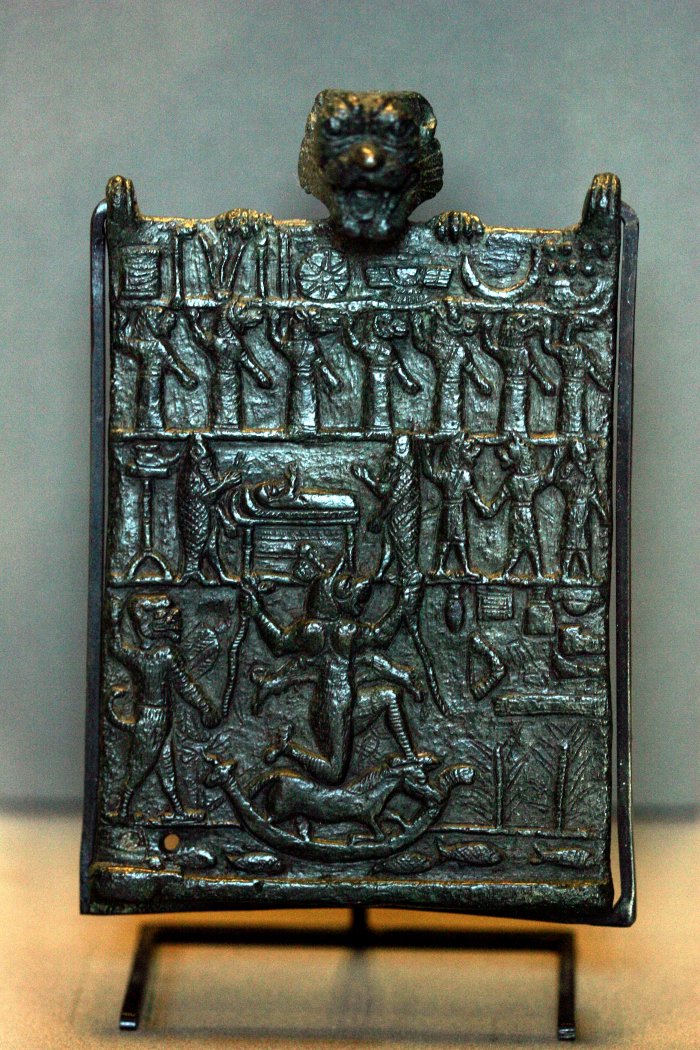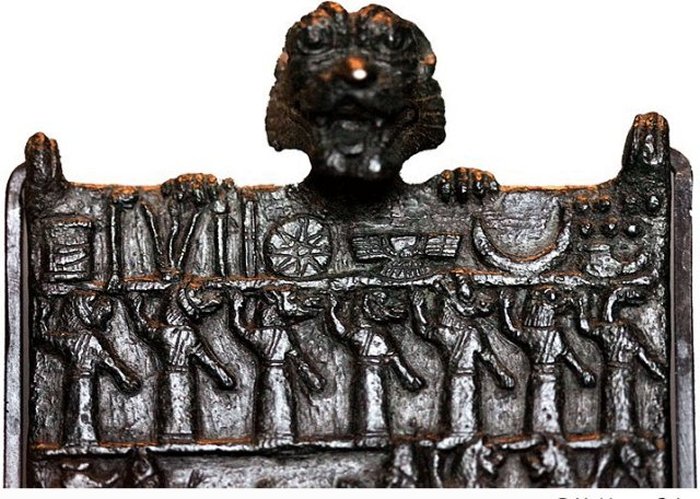Lamashtu Plaque: Assyrian Healing Device Against The Evil Goddess
A. Sutherland - AncientPages.com - 'Lamashtu Plaque' (or 'Hell Plaque') was an Assyrian healing device against the female demon Lamashtu and her evil doings.
Lamashtu plaque held by Pazuzu. Image credit: Rama - CC BY-SA 2.0 fr
Now in the Louvre, the original of this plaque is made of bronze and dates from the Neo-Assyrian period between the tenth and seventh century BC. Lamashtu plaque held by the demon Pazuzu, the king of the demons of the wind and son of Hanbi, the god of all evil forces and the father of Pazuzu and Humbaba.
The artifact is one of many valuable ancient Assyrian treasures.
Lamashtu, often called "she who erases," is an evil creature blamed for the deaths of children and mothers, poisoning water, killing plants, consuming the flesh, drinking the blood of adult men, and causing nightmares. She had a hairy body with a lioness's head, a donkey's teeth and ears, and bird talons.
According to Mesopotamian beliefs, hanging the plaque over the bed was important to ward off sickness by driving evil Lamashtu out. She was believed to cause many illnesses. Her husband Pazuzu, shown on the back, is invoked to persuade her to go away and thus speed the patient's recovery.
Exorcism Ceremony Depicted On The Artifact
The exorcism scene is divided into registers. The upper register shows symbols that symbolize the great cosmic gods invoked to heal the sick person: the sun of Shamash, the crescent moon of Sin, the lightning bolt of the storm god Adad, and the winged disc of Ashur, the supreme god of the Assyrian Empire.
The seven spirits depicted in the second register (each with a different animal's head) probably had a beneficial function because they symbolically guard the door of the patient's bed-chamber.
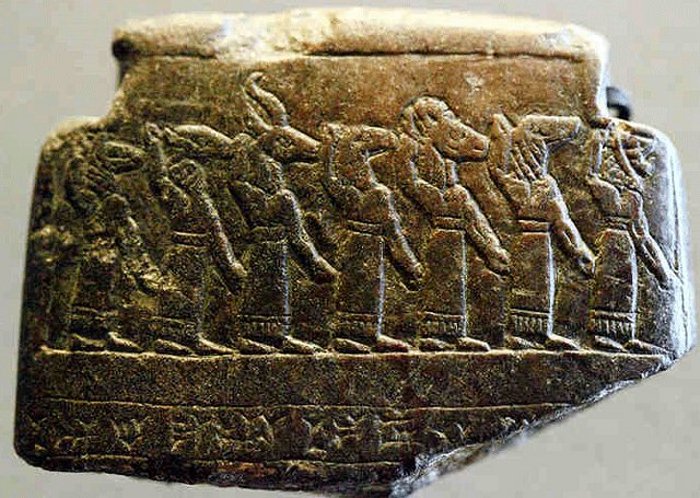
Protection plaque against Lamashtu (fragment). Dimensions: 6.40 cm high, 8.40 cm wide, 1.20 cm deep. Photo credits: Rama - CC BY-SA 2.0 fr - Louvre Museum
The patient is seen in the third register, lying on a bed surrounded by two figures dressed in fish skins. These figures could be the spirits associated with Ea, the god of the depths and wisdom. They are probably the priestly exorcists conducting the ritual with the help of three animal-headed spirits.
Driving Out Evil Spirits
Lamashtu, sitting on a donkey in a boat is depicted in the lower register. The evil Lamashtu is twice as big as all the other characters. She is presented as physically fearsome, with a hairy body, lion's head, and talons.
She is holding and suckling two lion cubs and snakes. From an inscription, we learn that she is "furious and cruel, a dazzling goddess. As a she-wolf; she snatches the young man on the path, the girl at play, the child from his nurse's arms." Clearly, she is responsible for evil deeds.
The boat is sailing along a river full of fish, symbolizing the world of Apsu (Abzu) - the underworld home to demons. Do all the gifts depicted on the artifact encourage Lamashtu to set off on her journey back to the underworld? Pazuzu is standing behind Lamashtu and is as fearsome as his wife.
He is present there to protect the patient by urging his wife to retreat. This ancient belief was very strong and widespread in the 1st millennium in Mesopotamia. Ancient Mesopotamians feared Lamashtu and searched for different means to protect themselves from this dangerous female demon and her evil doings.
The uppermost part of the plaque displays the different gods involved in the healing process: the sun of Shamash, the crescent moon of Sin, the lightning bolt of Adad, and the winged disc of Ashur.
Close-up of plaque' s top register. Pazuzu holding the protection plaque against Lamashtu. Photo credits: Rama - CC BY-SA 2.0 fr - Louvre Museum
In the second register, seven animal-headed spirits guard the door to a bed-chamber, and in the third, the patient is depicted lying on a bed, flanked by two priests, who are aided by three animal spirits associated with Ea god (or Enki), the Sumerian god of water, knowledge, mischief, crafts, and creation.
Overlooking the plaque is Lamashtu's husband, the demon Pazuzu, the only one who could persuade her to go away. It's worth mentioning that 'Lamashtu Plaque' was originally thought to have represented the Babylonian goddess Eresh-kigal and her journey through the underworld.
The lion-headed figure at the top was believed to be the Babylonian god Nergal, ("Great Watcher") and Ereshkigal's husband.
In Mesopotamian mythology, the goddess Ereshkigal, "Queen of the Great Earth," ruled the underworld. She was also called Irkalla and the only one who could pass judgment and give laws in her kingdom.
Was the female demon Lamashtu the goddess Ereshkigal?
Based on Mesopotamian mythology, Lamashtu was the daughter of the sky god Anu. There is also a Semitic list of seven called Kamu or captive demons: Lamashtu, Labasu, Akbazu, Lilu, Lilitu, Ardat, Lili, and Mukil.
Was Lamashtu punished for misbehaving by the supreme gods and expelled from the Earth to underground realms where she was forced to stay indefinitely?
Written by – A. Sutherland AncientPages.com Staff Writer
Updated on March 14, 2023
Copyright © AncientPages.com All rights reserved. This material may not be published, broadcast, rewritten or redistributed in whole or part without the express written permission of AncientPages.com
Expand for referencesReferences:
Leick, Gwendolyn, Mesopotamia
More From Ancient Pages
-
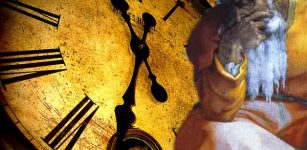 Did Ancient Civilizations Possess Knowledge Of Time Travel?
Ancient Technology | Sep 17, 2018
Did Ancient Civilizations Possess Knowledge Of Time Travel?
Ancient Technology | Sep 17, 2018 -
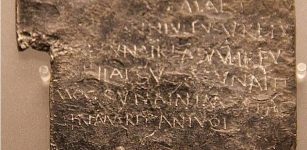 Defixiones: Ancient Roman Curse Tablets Became Big Business
Ancient History Facts | Apr 10, 2016
Defixiones: Ancient Roman Curse Tablets Became Big Business
Ancient History Facts | Apr 10, 2016 -
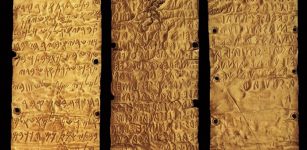 Pyrgi Gold Tablets: A Rare Ancient Bilingual Treasure
Artifacts | Nov 23, 2018
Pyrgi Gold Tablets: A Rare Ancient Bilingual Treasure
Artifacts | Nov 23, 2018 -
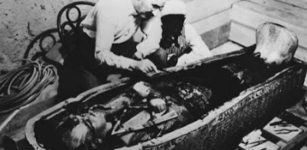 Howard Carter Stole Tutankhamun’s Treasures – Previously Unpublished Letter Reveals
Archaeology | Aug 15, 2022
Howard Carter Stole Tutankhamun’s Treasures – Previously Unpublished Letter Reveals
Archaeology | Aug 15, 2022 -
 207-Year-Old Whaling Shipwreck Discovered In Gulf Of Mexico
Archaeology | Mar 23, 2022
207-Year-Old Whaling Shipwreck Discovered In Gulf Of Mexico
Archaeology | Mar 23, 2022 -
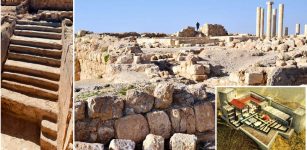 Ritual Bath In Herod’s Fortress Found In Ruins Of Machaerus, East Of Jordan River
Archaeology | Jun 16, 2017
Ritual Bath In Herod’s Fortress Found In Ruins Of Machaerus, East Of Jordan River
Archaeology | Jun 16, 2017 -
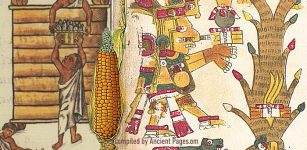 Centeotl: Lord Of Maize Who Was Revered Before The Olmecs By All Mesoamerica’s Inhabitants
Featured Stories | Feb 20, 2024
Centeotl: Lord Of Maize Who Was Revered Before The Olmecs By All Mesoamerica’s Inhabitants
Featured Stories | Feb 20, 2024 -
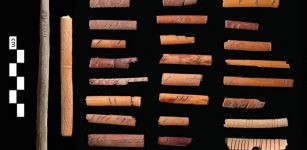 America’s First Casino Was Created By The Promontory Culture 700 Years Ago
Ancient History Facts | Apr 30, 2016
America’s First Casino Was Created By The Promontory Culture 700 Years Ago
Ancient History Facts | Apr 30, 2016 -
 Jiangshi – Terrifying Vicious Ancient Chinese Vampire In Disguise
Chinese Mythology | Jun 11, 2020
Jiangshi – Terrifying Vicious Ancient Chinese Vampire In Disguise
Chinese Mythology | Jun 11, 2020 -
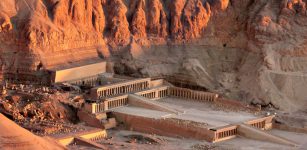 Deir el-Bahri – Sacred Resting Place For The Pharaohs
Featured Stories | Mar 22, 2022
Deir el-Bahri – Sacred Resting Place For The Pharaohs
Featured Stories | Mar 22, 2022 -
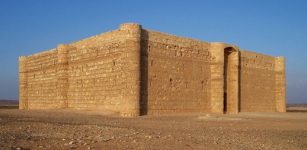 Strange Desert Castle Qasr Kharana In Jordan
Featured Stories | Oct 1, 2019
Strange Desert Castle Qasr Kharana In Jordan
Featured Stories | Oct 1, 2019 -
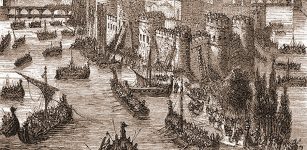 On This Day In History: ‘Sea King’ Ragnar Lodbrok Seizes Paris – On March 28, 845
Featured Stories | Mar 28, 2016
On This Day In History: ‘Sea King’ Ragnar Lodbrok Seizes Paris – On March 28, 845
Featured Stories | Mar 28, 2016 -
 Smuggled 1,800-Year-Old Lydian Atonement Inscription Sent Back To Turkey By Italy
Artifacts | Sep 28, 2020
Smuggled 1,800-Year-Old Lydian Atonement Inscription Sent Back To Turkey By Italy
Artifacts | Sep 28, 2020 -
 Ancient Treasure Hidden In Perplexing Secret Underground Labyrinth In France – Discovery And Forbidden Excavations – Part 2
Featured Stories | Jan 19, 2020
Ancient Treasure Hidden In Perplexing Secret Underground Labyrinth In France – Discovery And Forbidden Excavations – Part 2
Featured Stories | Jan 19, 2020 -
 Seven New Ancient Buddhist Caves – One With ‘A Harmika’ – Discovered In Mumbai
News | Jan 19, 2016
Seven New Ancient Buddhist Caves – One With ‘A Harmika’ – Discovered In Mumbai
News | Jan 19, 2016 -
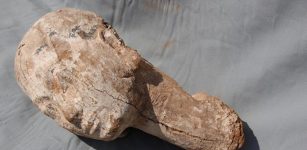 Ancient Wooden Sculpture Of Queen Ankhesenpepi II Discovered At Saqqara, Egypt
Archaeology | Oct 18, 2017
Ancient Wooden Sculpture Of Queen Ankhesenpepi II Discovered At Saqqara, Egypt
Archaeology | Oct 18, 2017 -
 On This Day In History: Treaty Of Worms Signed Between Great Britain, Austria And The Kingdom Of Sardinia – On Sep 13, 1743
News | Sep 13, 2016
On This Day In History: Treaty Of Worms Signed Between Great Britain, Austria And The Kingdom Of Sardinia – On Sep 13, 1743
News | Sep 13, 2016 -
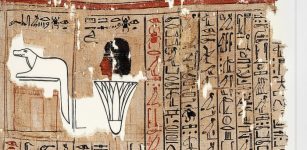 A Magical Handbook For The Afterlife – Insights To Ancient Egyptian Religion, Magic And Secret Knowledge
News | Jul 11, 2023
A Magical Handbook For The Afterlife – Insights To Ancient Egyptian Religion, Magic And Secret Knowledge
News | Jul 11, 2023 -
 Does A Baffling Artifact Offer Evidence Of Ancient Extraterrestrial Visitation In New Zealand? – The Discovery – Part 1
Featured Stories | Jul 20, 2020
Does A Baffling Artifact Offer Evidence Of Ancient Extraterrestrial Visitation In New Zealand? – The Discovery – Part 1
Featured Stories | Jul 20, 2020 -
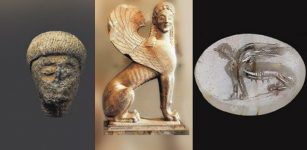 Rare Sphinx Seal Belonging To Roman Emperor Discovered In India Confirms Existence Of Legendary Muziris
Archaeology | Oct 1, 2020
Rare Sphinx Seal Belonging To Roman Emperor Discovered In India Confirms Existence Of Legendary Muziris
Archaeology | Oct 1, 2020

